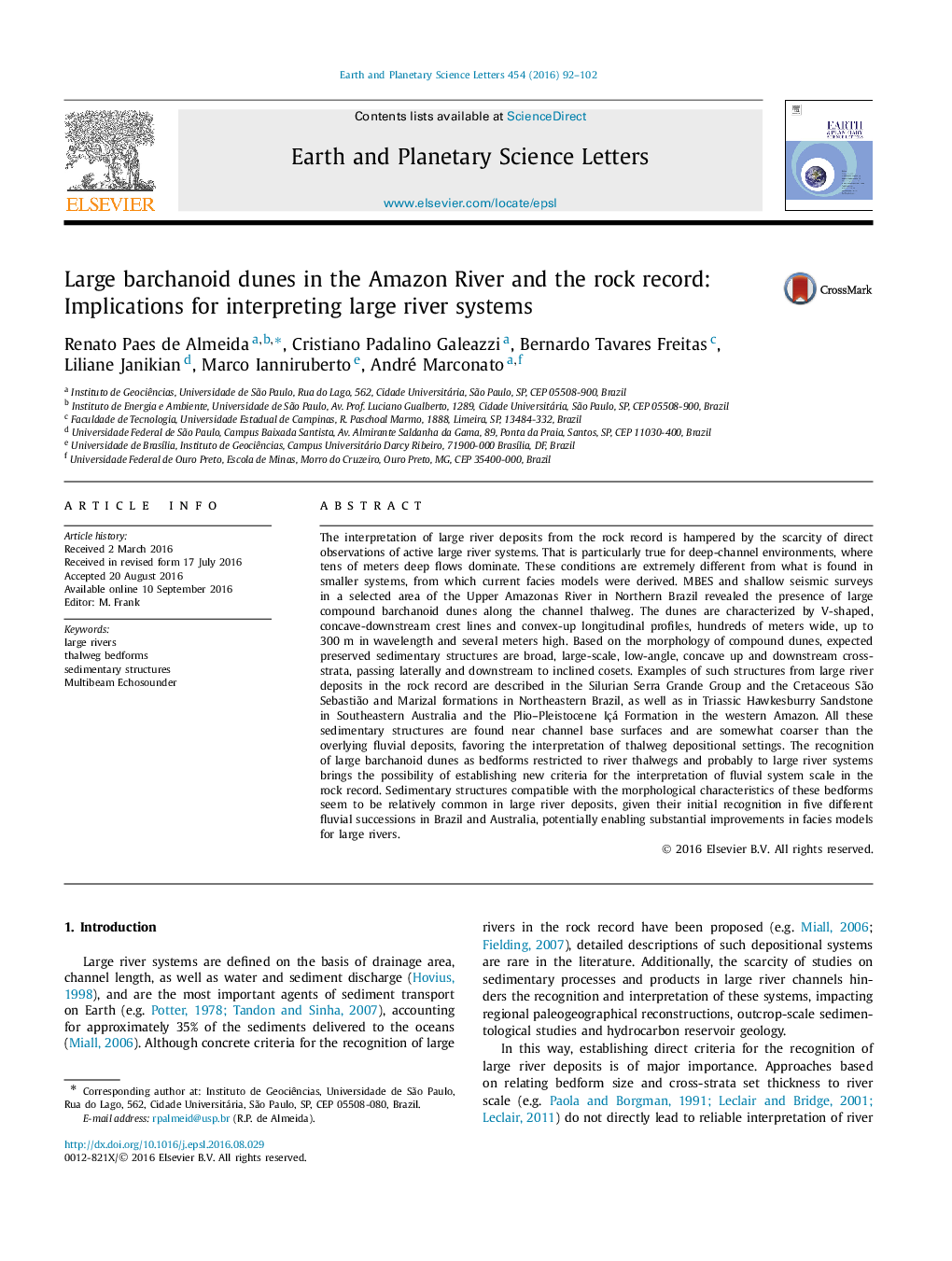| Article ID | Journal | Published Year | Pages | File Type |
|---|---|---|---|---|
| 6427186 | Earth and Planetary Science Letters | 2016 | 11 Pages |
â¢Large barchanoid dunes are newly described in the thalweg of the Amazon River.â¢A model for the internal structure of the barchanoid dunes is proposed.â¢Barchanoid dune deposits are reported in five different ancient fluvial successions.â¢A diagnostic feature of large river systems in the rock record is proposed.
The interpretation of large river deposits from the rock record is hampered by the scarcity of direct observations of active large river systems. That is particularly true for deep-channel environments, where tens of meters deep flows dominate. These conditions are extremely different from what is found in smaller systems, from which current facies models were derived. MBES and shallow seismic surveys in a selected area of the Upper Amazonas River in Northern Brazil revealed the presence of large compound barchanoid dunes along the channel thalweg. The dunes are characterized by V-shaped, concave-downstream crest lines and convex-up longitudinal profiles, hundreds of meters wide, up to 300 m in wavelength and several meters high. Based on the morphology of compound dunes, expected preserved sedimentary structures are broad, large-scale, low-angle, concave up and downstream cross-strata, passing laterally and downstream to inclined cosets. Examples of such structures from large river deposits in the rock record are described in the Silurian Serra Grande Group and the Cretaceous São Sebastião and Marizal formations in Northeastern Brazil, as well as in Triassic Hawkesburry Sandstone in Southeastern Australia and the Plio-Pleistocene Içá Formation in the western Amazon. All these sedimentary structures are found near channel base surfaces and are somewhat coarser than the overlying fluvial deposits, favoring the interpretation of thalweg depositional settings. The recognition of large barchanoid dunes as bedforms restricted to river thalwegs and probably to large river systems brings the possibility of establishing new criteria for the interpretation of fluvial system scale in the rock record. Sedimentary structures compatible with the morphological characteristics of these bedforms seem to be relatively common in large river deposits, given their initial recognition in five different fluvial successions in Brazil and Australia, potentially enabling substantial improvements in facies models for large rivers.
Graphical abstractDownload high-res image (136KB)Download full-size image
